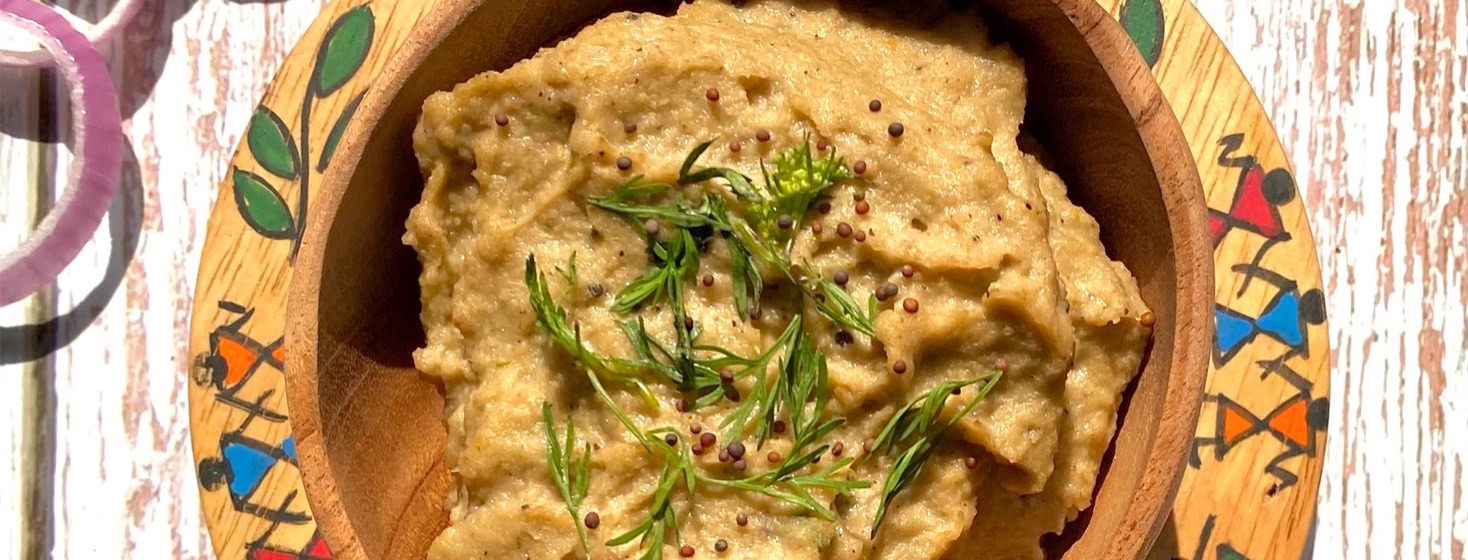Onion Chutney
Chutney is served as an accompaniment with almost every meal in India. They are essentially raw in nature. Although apportioned in small quantities, this easy to digest invention is packed with micronutrients and supposedly promotes digestion. It leaves a sweet, spicy, and tangy essence on the pallet that provides a different yet strong taste. Unlike jams or sauces, the consistency is thicker and syrupier. Compared to pickles, chutneys aren’t fermented and have a shorter shelf life.
So, make sure you consume it while it’s still fresh. It was common to serve chutneys made using tomato, coconut, peanuts, mint or mango as their main ingredient. But my mother’s onion chutney has by far been an all-time favorite that I used to relish along with crispy savory pancakes, toast, fryums, or mix it with plain rice. But after having been diagnosed with HS, I’ve modified the recipe and enjoy it with Indian bread.
Makes 3 servings
Prep time: 5 minutes
Cook time: 10 minutes
Ingredients for onion chutney
- 1 cup chopped red onions
- 1/2 cup split chickpeas
- 2 medium sized green chilies (I skip this step. Instead, I add about 10 peppercorns)
- 1 inch ginger finely chopped
- 2 tbsps tamarind pulp is ideal (I use sugar free Kokum juice)
- 6 curry leaves
- 1 cup coriander leaves
- 1/2 cup dry coconut chopped into bite sized pieces
- Salt to taste
- 2 tbsps oil (we normally use cold pressed coconut oil. Feel free to use cold pressed sunflower oil)
- Water
Ingredients for tempering
- 1/16th tsp mustard
- 1/16th tsp asafetida (hing)
- 1 tablespoon organic cold pressed coconut oil/sunflower oil
Directions for onion chutney
- Heat oil in a pan. Add split chickpeas and green chilies to it and stir fry for a few seconds on low flame until they change color. (Deseed the chilies if you prefer the chutney to be less spicy)
- Add ginger, curry leaves, coriander leaves, dry coconut and chopped onions. Sauté on low or medium heat. Keep stirring continuously.
- Once they all become aromatic and the onions start to lose their opacity, turn off the heat and let it all cool at room temperature.
- Transfer all the ingredients into a blender. Add kokum juice, salt and a little water before blending. If you add too much water, the chutney becomes runny, and flavors get diluted.
- Once all the ingredients are ground into a pulp like consistency, transfer it into a bowl.
Directions for tempering
- Heat one teaspoon of oil on medium flame.
- Add mustard and asafetida. When the mustards start to splutter, pour them on to the chutney.
You may garnish it using a few coriander leaves.
Nutrition facts
per serving
- calories: 487
- cholesterol: 0mg
- dietary fiber: 17g
- protein: 10g
- sodium: 1932mg
- sugars: 15g
- total carbohydrates: 54g
- total fat: 21g
Disclaimer: HSDisease.com does not provide any express or implied warrant toward the content or outcome of any recipe.

Join the conversation